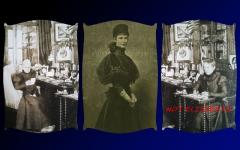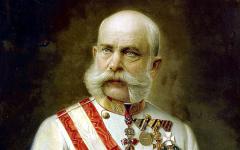Marie Valerie, the Favourite Daughter of Empress Elisabeth Called our Attention that her Mother’s Nickname is Sisi
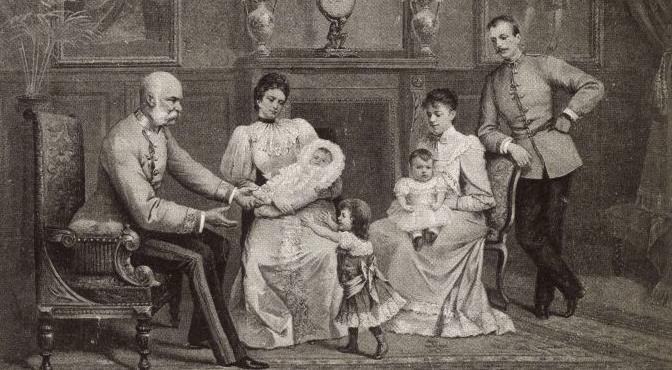
After my presentations about the Empress (my YouTube videos), I am often asked, "Is not her nickname spelt Sissi? Everywhere it can be seen like that." Although Elisabeth's nickname is spelt with double “s” at several places in Hungary and all around the world, the reliable bibliographers spell her nickname like this: "Sisi", as well as her memorial places in Hungary (Royal Palace of Gödöllő) and Vienna (Sisi Museum, Schönbrunn Palace). Some might think that "Sisi" is not as elegant as "Sissi". What is more, a few add a "y" in the end: Sissy! I am startled to see this version. I usually meet the issue of the nickname whenever I am interviewed or asked to hold a presentation about the Empress: I must call the interviewer’s or the client’s attention how to spell the Empress’ name. However, some refuse to do so saying, “we know this version, we use this version”.
In this paper, I will provide some evidences which support the fact that Elisabeth wrote her nickname like this: Sisi. Furthermore, I will discuss the question of the possible nicknames: Lisi and Lizi, and I will tell you a true story relating to another nickname that she used.
In the photo above: Franz Joseph, Elisabeth, Archduchess Marie Valerie with her husband, Archduke Franz Salvator and their first three children can be seen: in the middle, Elisabeth Franciska (Ella), Franz Karl Salvator (on Marie Valerie's lap), and Hubert Salvator (on Elisabeth's lap in swaddling clothes). © Austrian National Library, No.: Pf 19000 E 362
In fact, it was Elisabeth's family who spelt her nickname "incorrectly" since in German, the correct spelling of the nickname of Elisabeth is "Sissi". Of course, in her time, the Empress-Queen's nickname was only used by her relatives and survived in personal letters of the family members and their diaries. In the 19th-century newspapers, she is referred to as Kaiserin Elisabeth, her Majesty, the Empress, the Queen, etc. Due to her high rank, the use of her nickname would have been considered disrespectful. Below, I will quote from some of her family members.
*Her mother, Duchess Ludovika wrote in a letter: "I hardly see Sisi, she is very busy and I am afraid that I disturb the Emperor. Anyway, a young couple should be left alone." (Hamann, 72)
*Archduchess Sophie, her mother-in-law wrote in her diary about Elisabeth's labour (when she gave birth to her first child, little Sophie – if you want to watch my YouTube video presentation about it, please, click HERE): "Sisi was holding my son's hand [Franz Joseph's], and suddenly kissed it emotionally, respectfully and tenderly. It was so touching that my son started crying and kissing Sisi, comforted her and suffered with her..." (Hamann, 99)
*Franz Joseph, her husband wrote to Archduchess Sophie: "I beg you, Mother to be patient with Sisi, even if you are a bit jealous. Sisi is such a devoted wife and mother." (Hamann, 105)
*Her cousin, Ludwig II, the Bavarian king gave a little gold jewelry box to Elisabeth on the occasion of her 42nd birthday (at Christmas in 1881). He had the following engraved on the inner cover of it: „Angebetete, aufrichtig geliebte Sisi! Niemand auf Erden ist mir so teuer als Du! Ludwig / 24ter Dezember 1881” (quoted by Dirk Walter - source below in the index), which meant "My adored, faithful, beloved Sisi! I have no one on Earth who is so dear to me than you! Ludwig, 24 December 1881. This little jewelry box is regarded as a piece of important evidence that the real nickname of Elisabeth is spelt Sisi. If you study the box (here) you can see that it is spelt "Sisi". The "s" in "Sisi" looks the very same one in the word "ist" (which means in English: is). If you have a careful look, you will see.
Here is how Elisabeth signed her letters when she used her nickname. Researchers read it in two ways: for Lisi and for Sisi. Both nicknames were probably used by the family, at least by the Queen's father, Duke Maximilian. He called his daughter Lisi several times. I added this signature to a photo in which she is smiling. The photo was taken when she spent some time with her Bavarian family. The photo of Sisi by Joseph Albert © Austrian National Library, No.: ÖNB Pf 6639 E (13/2)
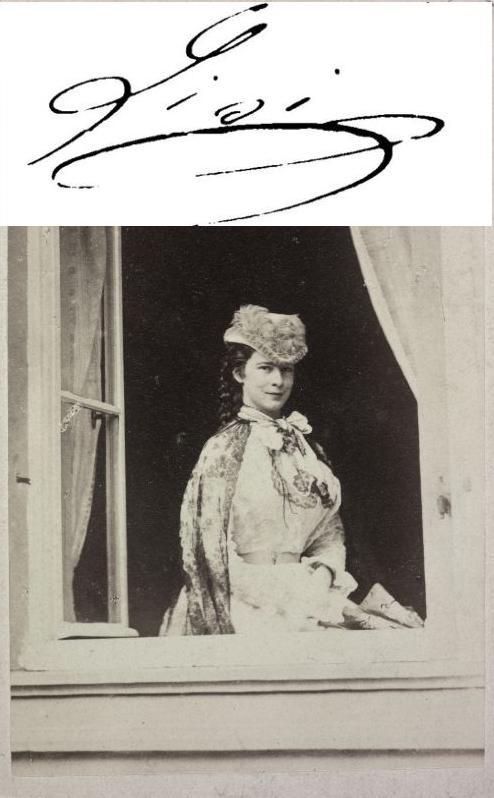
As mentioned above, the correct German spelling of the name Elisabeth is Sissi. However, since the Empress' family wrote it like this: Sisi, if we use her nickname instead of Elisabeth or Erzsébet (the Hungarian version, which she loved very much), we should spell it with a single "s" in the middle: "Sisi". A question can emerge: why is the double "s" version so widespread? The answer is quite simple: it is the title of Ernst Marischka's Sissi-trilogy in the 1950s. The Austrian director (Marischka) used Count Egon Ceasar Corti's bibliography of Elisabeth. Corti was the first one who could study the Empress' life via original documents, such as letters, diaries (also the diary of her daughter, Marie Valerie). It was published in 1934.
Ernst Marischka read this bibliography so he knew the facts very well. However, he handled them and their chronology rather differently.
Supposedly, one member of the Habsburg family did not allow him to add the title Sisi that is why its title is Sissi. If it is true, the family must have wanted to avoid the entire identification between the character and the historical Elisabeth. As we see, it happened anyway...
Sissi (1956) (a screenshot) © Seven Stars Digital
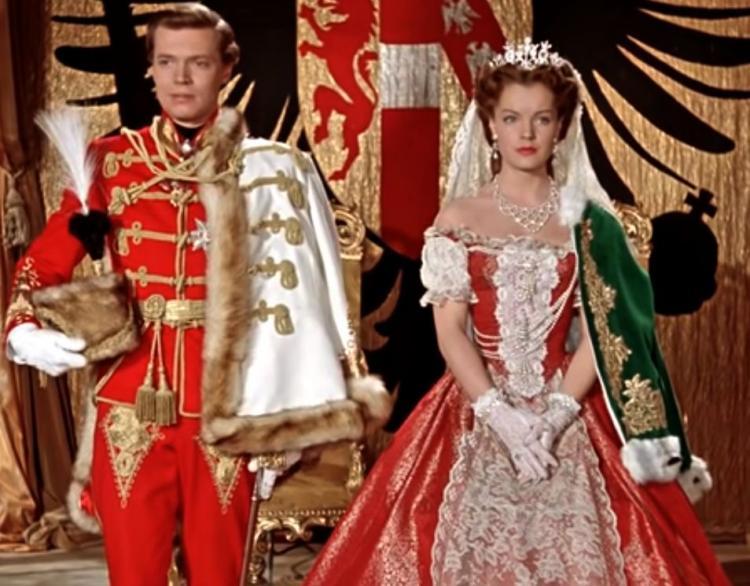
How did Marie Valerie spell her mother's nickname?
The Empress' favourite daughter, Marie Valerie also spelt her mother's nickname "Sisi" in her diary, several parts of which were published in a book by Martha Schad and Horst Schad, who were allowed to study her diary. „Sag Marie José, ich liesse ihr sagen, die alte Sisi sei tot auf immer”, wrote Valerie in her diary on 30 April 1889, after the death of Crown Prince Rudolf (30 January 1889). That is, Elisabeth said to Archduchess Maria Theresia to tell Marie Jose, "old Sisi is dead". (Schad, 197)
On 16 May 1890, Elisabeth's elder sister, Helene (Nene) died. A few days later, on 19 May, Valerie wrote in her diary: "Mama arrived at '/2 8 ... she was sad and weary. Aunt Nene, who did not believe she would die, was very happy to see Mama, and said: 'Old Sisi' ... since they talked to each other in English nearly all the time." (Schad, 222)
Can one be sure that her nickname is Sisi and not Lisi or Lizi?
Although there is so much evidence that supports the spelling, "Sisi", there are a few who still read her nickname (and believe it was) like this: Lisi or Lizi. Researchers read the signature above in two ways: for Lisi and for Sisi. Both nicknames were probably used by the family, at least by the Queen's father, Duke Maximilian. He called his daughter Lisi several times. Elisabeth had interesting handwriting and the capital letter might look an L or a Z. However, if we study several of her letters, we can notice that her capital S often looks rather like a Z. It is worth studying the letter below. In the very last line above her signature, it reads: "Szívből", which means "From the heart". She wrote this to Marie Valerie in Hungarian, like many other letters since she spoke to her daughter in Hungarian. We can see the capital letter of "Szívből" looks the very same S she uses in Sisi! The Empress signed her name in Hungarian: Erzsébet. She liked it very much as mentioned before. In this letter or telegramme, Elisabeth says thank you for the surprise she was given by Valerie: "Thank you for the good surprise a thousand times, which touched me very much. I was so glad about it. I kiss you from my heart. Erzsébet."
Elisabeth’s letter to Marie Valerie. It was written in Hungarian, the language she used when talking and writing to Valerie (my article relating to it). Look the word above “Erzsébet”: “Szívből”. The very same capital: Sisi – Szívből (in English: from the Heart). The photo of the letter (except the red wallpaper) © Dorotheum Lot No. 130

The other nickname of Elisabeth: Elise
Franz Joseph not only called his wife Sisi (Elisabeth) but also Elise. Sometimes other family members called her like that too. For instance, she wrote her mother-in-law once during the time of her engagement (in German): "My dear Mother-in-law (...) I and the Emperor kiss you, your humble daughter-in-law, Elise." (Corti, 49)
To support the fact that the Emperor often called her wife Elise, let us have an example. Miksa Falk, a writer-journalist taught Hungarian grammar and literature to the Empress at Hofburg and Schönbrunn Palace (Vienna). Falk recalled her memory and wrote - Schönbrunn: “(…) Here was sitting her Majesty, next to her on the floor two enourmous dogs were lying. They accompanied her on her walks. (…) Our lessons usually took several hours since they were only broken when we heard the voice of the Emperor from the first floor. He was standing on the upper part of the spiral staircase." (Miksa Falk, 21)
(Elisabeth's suite in Schönbrunn as in the Royal Palace of Gödöllő, consisted of two floors. A small private spiral staircase connected the two floors. The ground floor led to the garden in both residences.)
Franz Joseph called Elisabeth both Sisi and Elise, sometimes "my little Angel". In his letter to her, he usually addressed her like this: "My sweet beloved soul" and "my beloved angel".
Barbara Káli-Rozmis, researcher of Empress Elisabeth of Austria and Queen of Hungary
All of my articles on this website are protected by copyrights. I kindly ask you not to use them without my permission. My official: website
The sources of the quotes:Egon Cäsar Corti. Erzsébet (Hungarian edition). Révai Kiadás, 1935Brigitte Hamann. Erzsébet királyné (Hungarian edition). Európa Kiadó, 1988Brigitte Hamann. Kedves, jó barátném! (Hungarian edition). Európa Kiadó, 2000Marie Valérie. Das Tagebuch der Lieblingstochter von Kaiserin Elisabeth 1878-1899. Martha und Horst Schad. Langen Müller. Germany. 1998.Falk, Miksa: Erzsébet királynéról. Visszaemlékezések. Szépmíves Könyvek, 2016Dirk Walter: La déclaration de Louis II. Louis II. de Bavière http://louis2debaviere.com/la-declaration-de-louis-ii/More photos of the box: Tabakdose belegt Schreibweise "Sisi"
Cover photo of the article (which appears on Facebook): a painting of Elisabeth by Anton Einsle.
Ernst Marischka: Sissi-trilogy. Facts and interesting things - background information relating to the movie. (First video)


